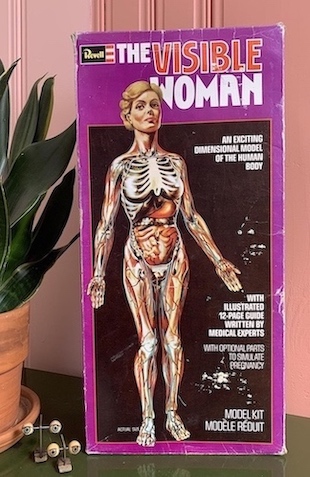“I crawled out of the bush away from the window and I began to run. My only safety lay in flight. If I had stopped I’d howl. I knew I must not stop. The thing was in my gut. In my parched, in my constricted throat. Humped raw cringing wounded to death. I’d howl into the night. Affrighting these houses. These well kept lawns. These softly polished pianos.” – Asher
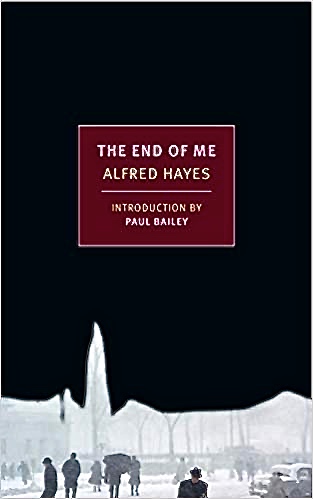 In this opening sentence from the approximately three hundred words of the first episode of this 1968 classic, author Alfred Hayes, reveals his immense talents in creating characters and dramatic scenes in as few words as possible. A successful screenwriter, TV writer, novelist, and poet throughout the mid-twentieth century, Hayes establishes the current life circumstances of the as-yet-unnamed main character, going straight to the point regarding the state of the man’s marriage, his refusal to recognize that reality, his feelings of failure at work, and his fears of getting old, upon which he blames all his problems. Spying on his wife through the window of their house outside of Hollywood late at night, the man realizes, “I was finished.” The next day, when his wife is gone, he goes to the house, packs up everything he thinks he will need in New York, and leaves, his parting shot to his wife being that he turns on every light inside and outside the house. “The house blazed. It was utterly illuminated.” And when the taxi arrives to take him to the airport, he is waiting “in the blazing house [which] I left glaring there among all the dark or the quietly lit houses in the neighborhood….I was alone. I had abandoned everything,” though the fully lighted house certainly made a statement to the neighbors.
In this opening sentence from the approximately three hundred words of the first episode of this 1968 classic, author Alfred Hayes, reveals his immense talents in creating characters and dramatic scenes in as few words as possible. A successful screenwriter, TV writer, novelist, and poet throughout the mid-twentieth century, Hayes establishes the current life circumstances of the as-yet-unnamed main character, going straight to the point regarding the state of the man’s marriage, his refusal to recognize that reality, his feelings of failure at work, and his fears of getting old, upon which he blames all his problems. Spying on his wife through the window of their house outside of Hollywood late at night, the man realizes, “I was finished.” The next day, when his wife is gone, he goes to the house, packs up everything he thinks he will need in New York, and leaves, his parting shot to his wife being that he turns on every light inside and outside the house. “The house blazed. It was utterly illuminated.” And when the taxi arrives to take him to the airport, he is waiting “in the blazing house [which] I left glaring there among all the dark or the quietly lit houses in the neighborhood….I was alone. I had abandoned everything,” though the fully lighted house certainly made a statement to the neighbors.
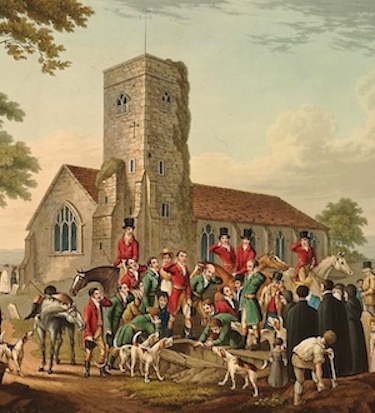
“The Burial of Tom Moody,” an engraving by Christian Rosenberg, 1831. To see full picture, click on photo.
That night, in the suite he has secured at a hotel near Central Park, he notes an English hunting print on the wall, and it is here that the author shows some of his own film experience, recreating a brief but vivid portrait of Tom Moody, the “Whipper-In” of a hunt club who has just died, a scene of burial stimulated by a print by Christian Rosenberg in 1831, which is hanging on the wall of the narrator’s hotel room. Here the speaker/narrator illustrates unmistakable parallels between himself and the characters in the print as Tom, the hunter, is buried. The narrator, whom we later learn is named Asher, describes the print in detail, noting that six “earthstoppers” dressed in green are the pallbearers, that the man’s white horse features the tail of the last fox Tom Moody hunted, displayed above its head, and that Tom Moody’s whip, cap and boots are bound to his horse in display. One of his dogs straggles behind the horse, and a woman weeps. He wonders if Tom Moody had ever “Fled? Hidden?” Or felt “finished,” and if he had ever crouched at a window and seen a lover unhook the “silvan brassiere?” of the woman he once loved. Slowly taking heart at being in New York, the narrator observes that he has given this city thirty-five years of his life and “Surely, what was broken in me, the crippled sense of myself, would be restored. I’d heal among these brutal angles….“I’d convalesce in her indifferent arms.”
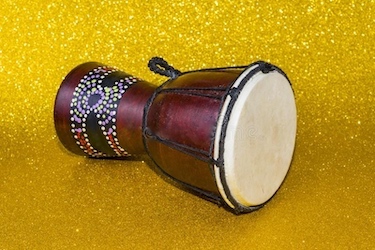
A darbouka, used at the performance by bellydancers, is played from the lap of a seated performer when Asher, Michael, and Aurora go to dinner.
The remainder of the novel takes place in New York, as he walks around his old neighborhood, notes all the changes that have taken place – the buildings razed, the excavation going on – and he thinks about the number of people he knew there who have died. Then he visits his Aunt Dora, and the real narrative begins. The speaker, eventually identified as “Asher,” is a screenwriter who no longer finds work in Hollywood, but Aunt Dora does not know that, still regarding him as “their famous man,” with his picture on display. He does not disabuse her of that as she brings him up to date on the family, and he quickly learns that Dora’s daughter, who is fifty -one, like him, is not around much now. Her son Michael Bey, now twenty-six, is very much present, and he wants to be a writer. Aunt Dora encourages Asher to offer Michael some help.

The “blind lute,” a fretless stringed instrument used at the bellydancing, may have referred to an oud.
When Asher and Michael visit, however, the meeting is a disaster, with Asher deciding that Michael is defiant and showily ambitious, with “flat jeering looks,” and Michael treating Asher with contempt. A second visit, in which Asher feels more comfortable, begins with Michael bringing a girl, Aurora D’Amore, with him, a girl who lives on the “old East Side, the old smelly East Side.” Beginning with dinner at a Japanese restaurant, they later go, at Aurora’s suggestion, to see belly-dancers in a dilapidated building, a clip joint, in which even the potted palms are fakes. Soraya of Istanbul, the star, lures Asher into giving her a kiss on her jeweled belly, and he recognizes that she is making a fool of him but does not back off.
The next day Asher meets with Michael and hires Michael to take him on a walking tour of his youthful past in New York, hoping, perhaps, to make some real connection to Michael, and, as the style shifts into stream of consciousness and free verse, Asher remembers some of his female conquests from the past. Michael shifts the balance of the relationship when he gives Asher a packet of his own poems to read. Asher is far from impressed by the erotic content, which “seemed to be the one elementary good in [Michael’s] uncontrollable world,” and when, in response to Michael’s question the next day on how he liked the poems, his response is that he found them “interesting.” The scene is effectively set for what follows, a close-up study of Asher, Aurora, and Michael, what they stand for, how they behave, the games that they play (real and psychological), and what the future bodes for each.
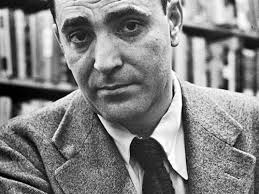
Author Alfred Hayes (1911-1985)
A closer look at Asher’s marriage and breakup with his wife evolves in the later part of the novel, and the reader and Michael and Aurora begin to become more familiar with him. Always, however, the reader’s perception of others comes from Asher himself. He has had little experience dealing with devious people; screenwriting and filming follow predictable protocols. Real life with two ambitious young people providing your “entertainment” is something else. Neither of them is who Asher thinks s/he is. Each quarrels with Asher at times and each plays games – both real and psychological. Ultimately, as Asher describes for the reader the exact nature of his breakup with his wife, the reader sees him still trying desperately to connect with Michael and Aurora. Ultimately, Asher belatedly reaches conclusions about himself – as does the reader of this dark and dramatic novel of a very late coming-of-age.
ALSO by Alfred Hayes: THE GIRL ON THE VIA FLAMINIA (1949), IN LOVE (1953), MY FACE FOR THE WORLD TO SEE (1958)
Photos. The “Burial of Tom Moody,” engraved by Christian Rosenberg, fascinated the speaker when he saw it in his NY hotel room shortly after leaving Hollywood. To enlarge for detail, click here: https://www.britishmuseum.org/collection/object/P_1939-0714-14
The darbouka played at the belly dance the speaker attends with Michael and Aurora may have resembled this one. https://www.dreamstime.com
The “blind lute,” a fretless stringed instrument, may have referred to an oud: https://www.muzikkon.com
“The Visible Woman,” a 1960s anatomical game played by Michael and Aurora, is from https://www.etsy.com
The author’s photo appears on https://www.nuvol.com
